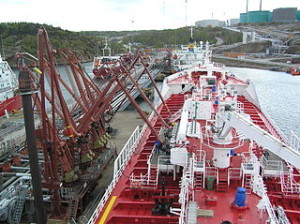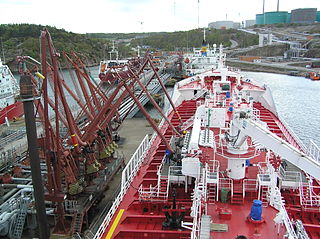 Many shipping lines have started applying low-sulfur bunker surcharge with the implementation of the new marine pollution regulation in North Europe and the U.S. since January, but the fall in fuel prices have actually offset the extra costs of the policy for carriers, Drewry points out.
Many shipping lines have started applying low-sulfur bunker surcharge with the implementation of the new marine pollution regulation in North Europe and the U.S. since January, but the fall in fuel prices have actually offset the extra costs of the policy for carriers, Drewry points out.
In a new analysis, the maritime consultancy said that before the low-sulfur marine fuel regulations were introduced in January 2015, shipping lines had warned they would have to increase bunker surcharges, raise freight rates, or introduce a new low-sulfur fuel surcharge to offset the extra cost of cleaner fuel.
However, very little of the expected cost increase from the new regulation has actually happened since January, according to data gathered by Drewry.
If fuel prices had stayed the same, the extra fuel cost on carriers of having to use the more expensive, low-sulfur marine gas oil in the protected Emission Control Areas was estimated at about US$29 per twenty-foot equivalent unit (TEU) from North Europe to the U.S. East Coast, $49 per TEU from North Europe to U.S. Gulf and $21 per TEU from North Europe to Asia.
From the Mediterranean to the Southern Hemisphere and from Asia to both the Southern Hemisphere and the Mediterranean, there are no Emission Control Areas and therefore no low-sulfur fuel cost impact on carriers, said Drewry.
Nonetheless, since the beginning of January, about half of shipping lines have actually charged a low-sulfur bunker surcharge (averaging about $55 per TEU) from North Europe to the U.S., and the remaining half included this extra cost in the base rate.
From North Europe to Asia, about half of shipping lines have actually charged a low-sulfur bunker surcharge (averaging about $20 per TEU), and the other half include this extra cost in the base rate.
Some shippers have refused to pay any more to cover the low-sulfur fuel costs, on the ground that the cost of standard Intermediate Fuel Oil has decreased during the same period, said Drewry.
“Given the scale of the decrease in the BAF (Bunker Adjustment Factor) cost component on the Asia-Europe route, a nominal increase of $20 per TEU linked to the low-sulphur fuel was immaterial,” it added.
Furthermore, the underlying bunker price paid by shipping lines to run their ship engines in all areas other than the protected Emission Control Areas has dropped by 44% between July 2014 and December 2014—an even bigger fall than that of BAF charges.
Because of the lag time between bunker price changes and BAF charge changes, Drewry expects that BAFs will continue to decline in the short term.
The maritime research company concludes that for now, the net cost of the low-sulfur maritime fuel regulation of the International Maritime Organization has been “virtually zero,” but that the real cost will be seen once fuel prices start rising again, as will inevitably happen.
“Resistance from shippers and the opportune collapse of oil prices have neutralized the cost impact of the low-sulfur fuel surcharge in the container shipping sector, at least for now,” it said.
Photo: Marcusroos





